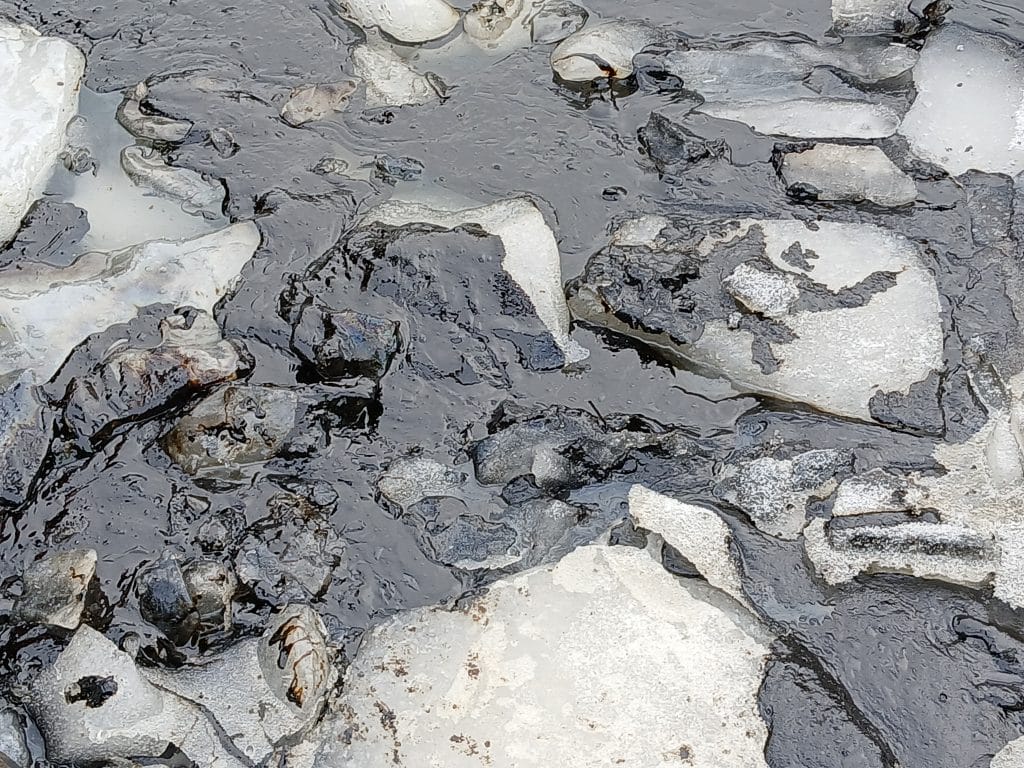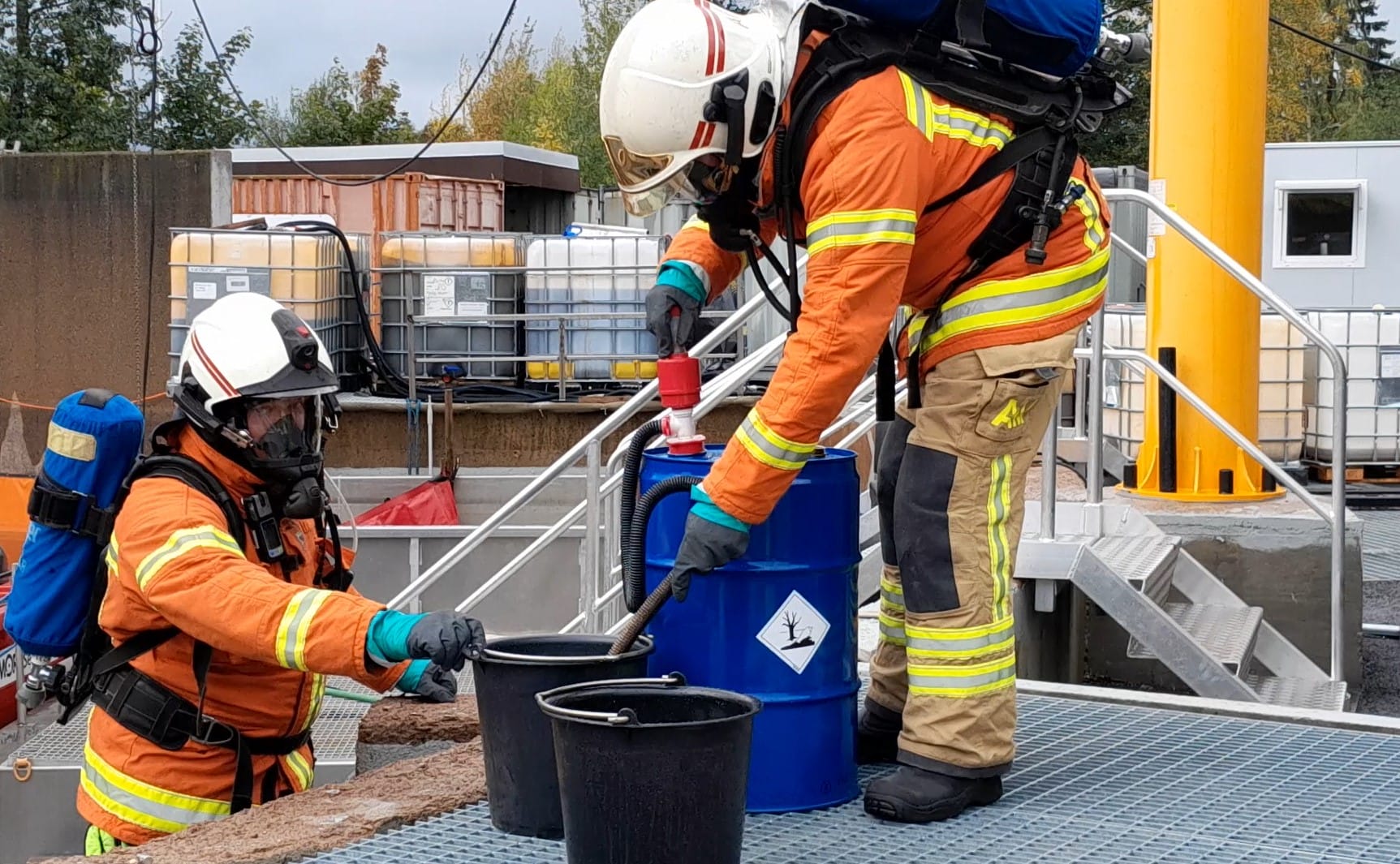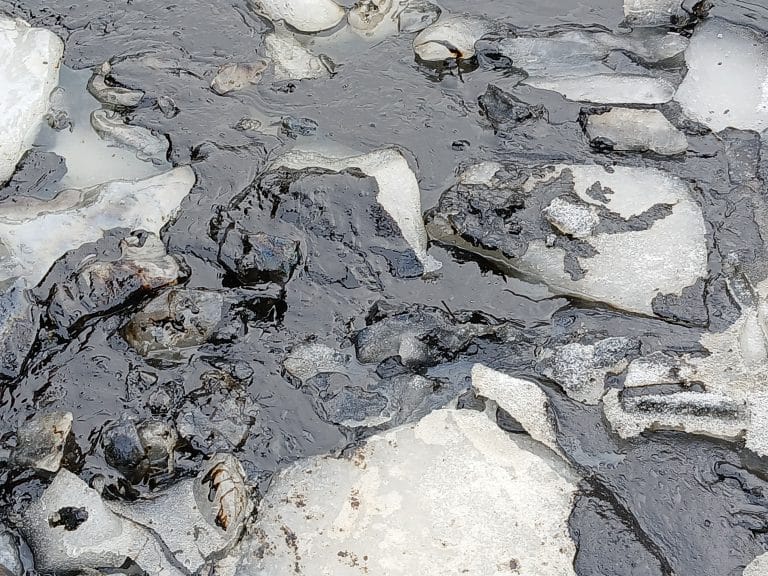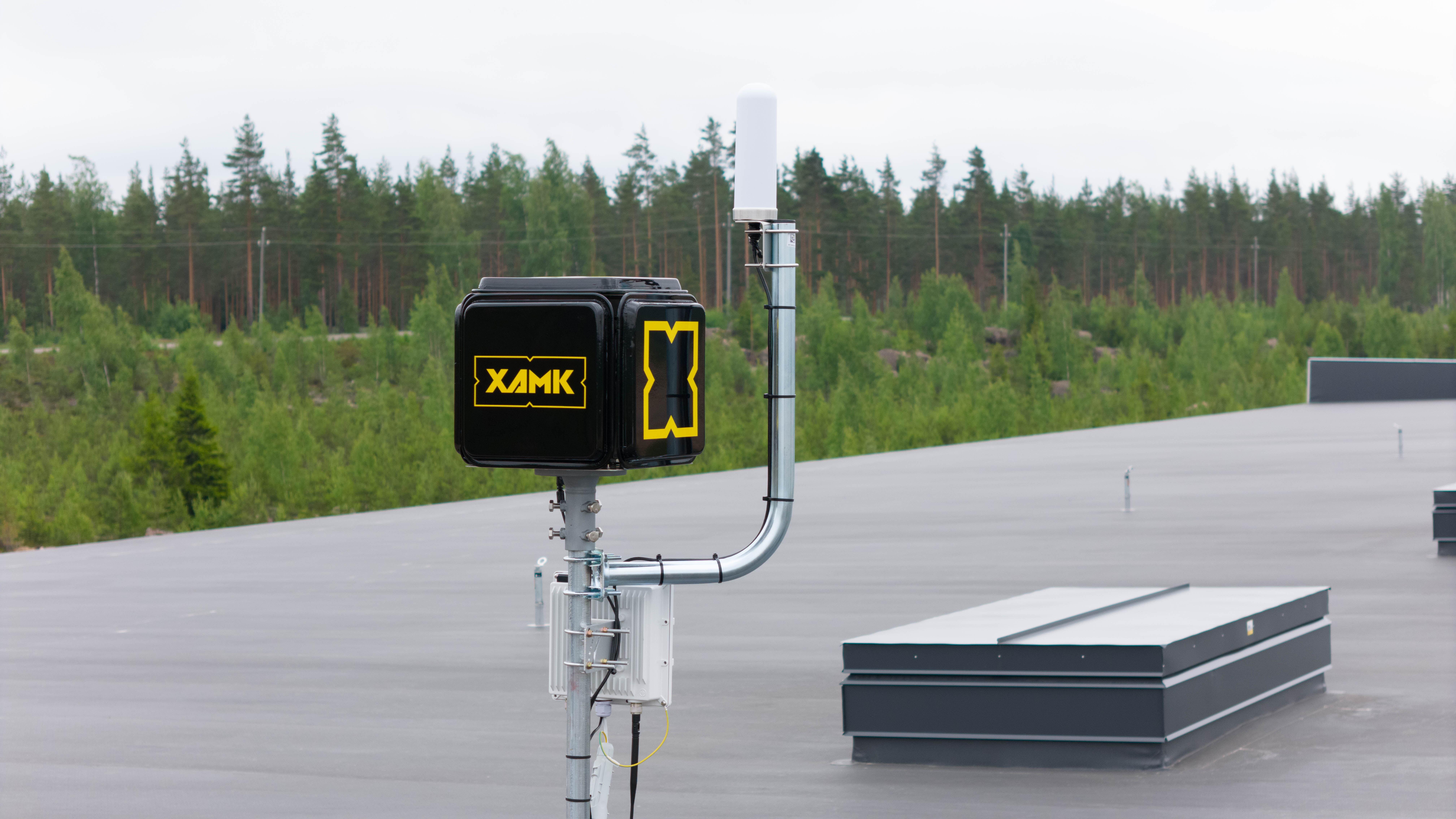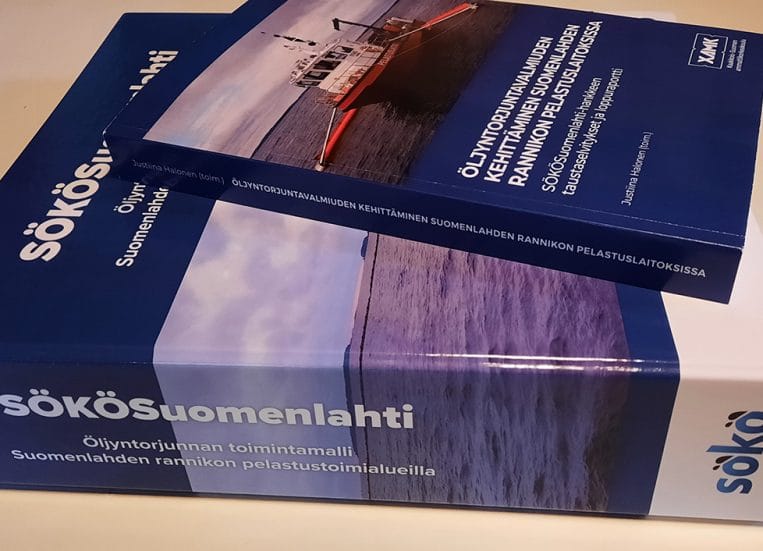Raw Data on Crude Oil
The volume of crude oil transported on the Gulf of Finland has remained more or less unchanged, despite the sanctions imposed on Russian crude oil. However, the vessels used for transport have changed. Older vessels and less insurance cover are being used to transport oil. The risk of oil spills can therefore be said to be higher than previously. (Simola 2023.)
Preparedness to tackle crude oil spills is therefore seen as more important than ever. To prepare for response measures, a project was launched at the Xamk oil spill response basin to test crude oil. The tests will gather information on the hazardous properties of the substance, its flammability and concentrations that are harmful to health. At the same time, information is being gathered on the spill behaviour and recoverability of crude oil.
CRUDE OIL IN MARINE WATERS
The behaviour of oil spilled at sea is always difficult to predict accurately, as it depends not only on the chemical and physical properties of the oil, but also on external conditions such as the temperature and wave action. In the case of crude oil, prediction is even more difficult. Crude oil is composed of thousands of different hydrocarbon compounds, each with its own behavioural characteristics. Crude oils also differ from one another, as their exact structure is determined by the conditions under which the oil is originally formed. (Nissinen 2000, 8.)
Unrefined crude oil contains all the fractions from “petrol to bitumen”, i.e. oil hydrocarbons from light to very heavy fractions. When a spill occurs, the lighter compounds evaporate from the crude oil, increasing its viscosity and density and potentially causing it to sink. (Nissinen 2000, 12.)
Crude oil is also sensitive to emulsification and can form thick masses resembling chocolate mousse, with a water content of 50-80%. The emulsion may also become heavier than water and sink below the water level. Crude oil may also clump together and form tar balls. (Fingas 2013, 49, 55–56; Nissinen 2000, 12.)
VARIED AND CHALLENGING TO CONTROL
The properties and controllability of crude oil change over time: what was originally liquid oil may become a heavy, semi-solid substance as the response operation progresses (Nissinen 2000, 10). The use of several response methods must therefore be anticipated. For example, it may be possible to use recovery systems on board response vessels or floating skimmers to recover oil on the open sea, but once the spill has reached the shore, the material may be mainly in shovel-able form.
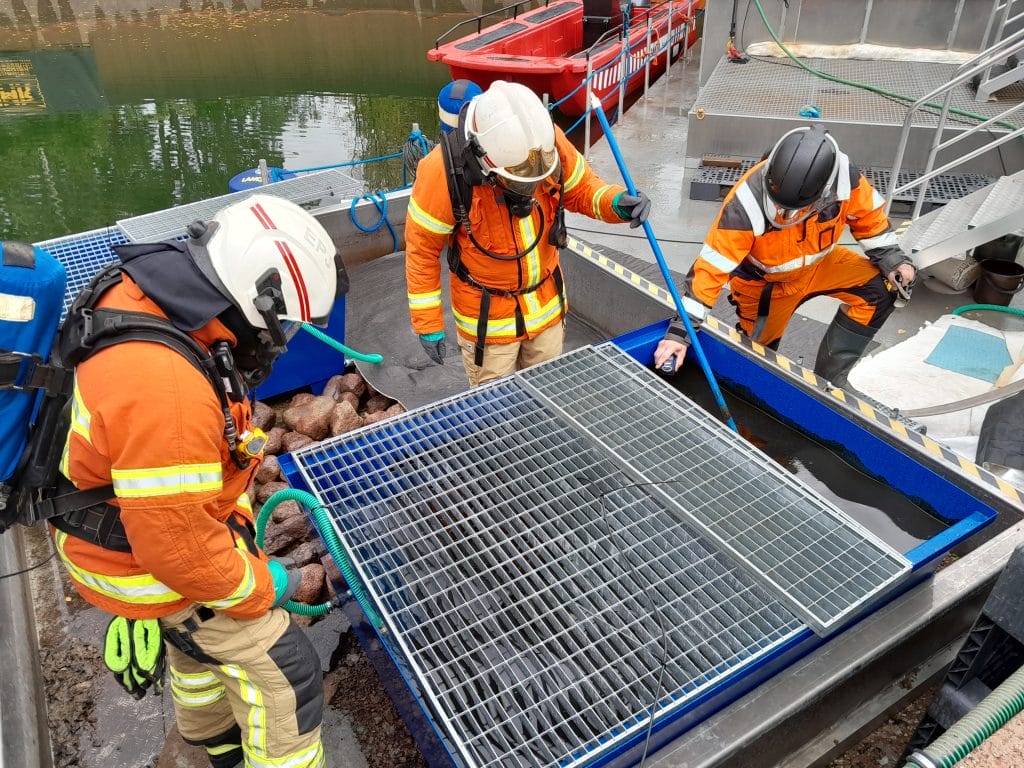
HIGHLY HARMFUL TO HEALTH WHEN FRESH
Spilled crude oil is highly toxic, especially in the early stages, when the BTEX compounds it contains volatilise. BTEX compounds (benzene, toluene, ethylbenzene and xylene) are highly toxic to both the marine environment and response personnel. (Nissinen 2000, 9.)
Benzene, in particular, is a very harmful compound: it is carcinogenic and potentially damaging to the nervous system, causing headaches, dizziness and nausea even at low concentrations. (Nissinen 2000, 9).
Generally, the most toxic compounds are the first to evaporate, reducing, but not eliminating, health risks over time. Evaporation also reduces the flammability of the oil. It should also be noted that photoacidification can convert the oil into toxic peroxides and acids. (Nissinen 2000, 10–11.)
In the event of a crude oil spill, the response procedures for hazardous substances should be followed. Future tests aim to improve the conditions for safe response by providing measurement data on the concentrations of crude oil that are hazardous to health and the risk of ignition. Both rescue authorities and occupational health professionals are involved in the testing.
MEASUREMENT DATA FROM FIELD TESTS
The measurements for the response tests are carried out using multi-gas detectors mounted both permanently on the oil spill response basin and in the breathing zone of the response personnel. The concentration meters collect continuous measurement data on concentrations of toxic and flammable gases and vapours and oxygen throughout the spill response process.
The continuously recorded raw data is analysed and used to identify the most hazardous work stages and times for health and safety. This analysis results in a description of the safety environment, including a risk assessment.
IMPORTANCE OF MEASUREMENT DATA
The hazardous properties of oils and chemicals are described, for example, in Material Safety Data Sheets. However, the values are determined for a pure product under certain standard conditions. As described above, the behaviour of the substance is also affected by the conditions of the spill. In addition, different response and recovery methods have been found to influence the concentration values. The current project will investigate through field measurements how and to what extent these effects occur.
The results have a direct impact on oil spill response activities, the way they are carried out and the safety of operations. The results will be widely shared, as the project will serve as a preliminary study for an international development project.
References
Simola, M. 2023. Ympäristövahinkojen torjunta on keskeinen osa Rajavartiolaitoksen merellisiä tehtäviä. Pääkirjoitus. In: Rajamme Vartijat. 2/2023. Rajavartiolaitoksen sidosryhmälehti. p. 4–5. Available at: https://raja.fi/rajamme-vartijat-lehti
Nissinen, J. 2000. Raakaöljyä Suomenlahden laineille. Katsaus raakaöljyn ominaisuuksiin, ympäristövaikutuksiin, torjuntaan ja onnettomuuksien historiaan eteläisillä aluevesillämme. Suomen ympäristökeskus, Helsinki.
This text is a translation of the article “Raakaa dataa raakaöljystä” published in Xamk READ 3/2023 Research, Education and Regional Development online journal on 3rd October 2023.
Project Data for Safer Oil Spill Response will be implemented between 1.9.2023–31.12.2024. The project is funded by the Kymenlaakso Regional Council from AKKE Funds, and Xamk. The Xamk oil spill response basin was created in 2019–2021 in ERDF-funded projects Oil spill response research and testing environment (A75152 and A75160) and has since been developed with Xamk’s resources.




